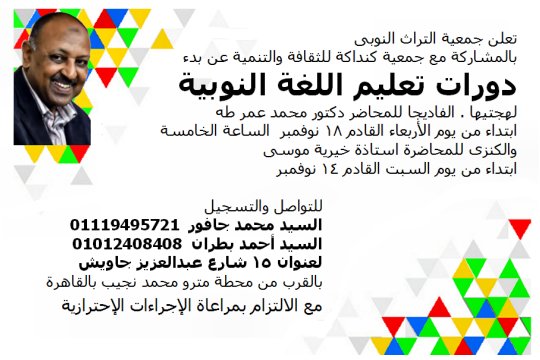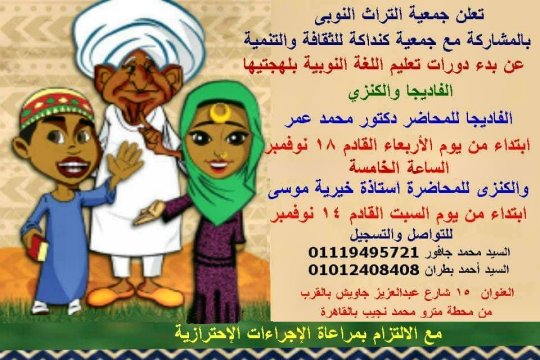Discover the Great Nubian Writers
Fascinating Nubian Songs & Music, Nubian Language,Literature, Visual Arts, Nubian History, Events & Contacts
Fascinating Nubian Songs & Music, Nubian Language,Literature, Visual Arts, Nubian History, Events & Contacts
Like the other forms of Nubian art, the Nubian language has its roots in the ancient population of the Nile River spanning from Aswan in today's Egypt to Khartoum in Sudan. In fact, the Nubian language is a form of art, due to its melodious intonation that easily translates into poesy and songs. With its first written traces in the temple of Abu Simbel built in the 12th century B.C., the Old Nubian language alternated between periods in which it was written - as in ancient Meroitinc inscriptions in today's Northern Sudan - and periods in which the language was passed on orally. Recently, efforts from Nubian scholars brought the language back to a structured form written in the Nubian alphabet, derived from Greek and Coptic letters with some letters adapted to the specific sounds in Nubian. Extensive efforts are done to revive Nobiin and Kenzi, both derived from Old Nubian, by teaching the language to the young generation and Nubians whose parents were displaced from their villages of origin due to the construction of consecutive dams and the formation of Lake Nasser, that drowned a large portion of Nubian lands.
According to stone tools evidence found by archaeologists, the Nile Valley between the 1st and the 6th cataracts (between today's town of Aswan in Southern Egypt and Omdurman in Sudan, north of the capital Khartoum) was inhabited since at least half a million years, probably since much longer - up to 2 million years ago. As the region was very fertile during this whole period, and quite protected and isolated through the cataracts, it served as an ideal cradle for the development of civilization, and thus the Nubian language in its millennia-long evolution is one of the oldest permanently spoken languages in the World. Furthermore, the self-reliant, sociable and traditionalist nature of the Nubian population lets imagine that the roots of the Nubian language were developed since prehistoric times, although due to the absence of writing it can't be proven by scientists.The Nubian language, a direct descendent from Omotic - which is considered by linguists to be the root language, is part of the Afro-Asiatic, Nilo-Saharan language group, and linguists date it back to at least the 9th to 6th millennium B.C. Some scientists even believe it was the first structured language in the World. While the word "Adam" in most languages stand for a name, in Nubian "adam" means "human being". And the name "Eva" is presumed to have been derived from "ouwo", which means "two" in Nubian. The very limited influence of languages that passed the region due to conquests, administrative shifts as well as commercial and religious influences also reinforces the assumption that the Nubians preserved and protected their language since very ancient times. While Old Egyptian hieroglyphic inscriptions in Nubia predate the Meroitic writing, starting in the 8th century B.C., during the Kushite Meroitic Kingdom, many inscriptions in Meroitic - first written in hieroglyphics, later in Egyptian demotic script and finally in its own alphabet of 24 letters derived from Demotic appeared. The Meroitic texts refer mainly to funerary, administrative and royal writings; however, up to this day the Meroitic writing hasn't been fully deciphered, therefore we have only a basic knowledge of this language. Due to the close ties with Egypt, the Meroitic ruling elite was bilingual Meroitic and Egyptian. While some scholars doubt that Meroitic was the precursor of Old Nubian, others - like F.L. Griffiths - assume that Meroitic was related to Nubian, and possibly both variations of the language may have been spoken simultaneously, Meroitic being the language of the elite and administration while Nubian was the commonly spoken language.
There is evidence that In Southern Nubia, South of the 1st cataract, people were speaking a language different from Old Egyptian. Translators were present with the Egyptian rulers to connect with the local populations; also, some place names and surnames were Nubian, and inscriptions in the northern and southern sides of the door frame of the famous temple of Abu Simbel, built by Pharaoh Ramses II in 1244 B.C., refer to the North and the South in Nubian.
Archaeologists have found many inscriptions in Old Nubian from the Christian period since around AD 600, including a Bible - which was translated from Greek into Nubian - and many scrolls from Qasr Ibrim. After the Arabic conquest, the introduction of Islam and the fall of the Nubian kingdoms in the 13th and 14th century AD, writing of the Nubian language disappeared However, oral transfer of the language - and the relatively isolated location - helped preserve the Nubian language which continued to be spoken and taught throughout Nubia. However, the greatest challenge to the preservation of the language came after the repeated displacement of the Nubian population in Southern Egypt, due to the construction of successive dams and the submersion of large parts of Nubian lands under Lake Nasser (Lake Nubia). While some of the Nubians whose villages were flooded were relocated in a remote Arabic-speaking region east of Kom Ombo, many went to the cities in Egypt or traveled abroad in the search for work and for a living. In these environments, into which the Nubians had to struggle to adapt, the language faded very fast and many young Nubians today don't know their language of origin.
Thanks to huge efforts by Nubian scholars to revive the Nubian language and to teach it to the new generations, and the eagerness of researchers of Nubian heritage to present their art and traditions to a larger public, Nubian experiences a resurge in interest and was saved from oblivion. We encourage all Nubians and friends of Nubian Art to promote the conservation of this wonderful melodious language.
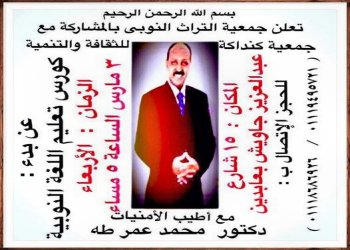
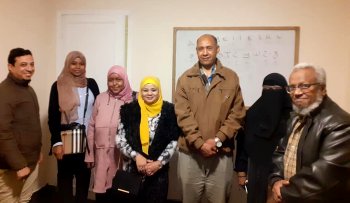

Late Professor Mohammed Metwelly Badr is considered to be the pioneer of the Nubian language. Born in Nubia in Northern Sudan, he studied in Egypt and worked for the Ministry of Education in Aswan. In 1955 he published his first book, "The Nubian Language", containing a short history of Nubia, Grammar of the Nubian language and a short dictionary. Here you can download it
المرحوم البروفيسور متولي بدر - "اللغة النوبية

Professor Mohamed Metwally Badr also wrote a book entitled "The Rulings and Proverbs of Nubia". While he worked on a larger Nubian - Arabic dictionary that was to contain more than 12000 words, he published his book "Read the Nubian Language" in 1976. He also wrote children's books, books about childrens' education and short stories, but didn't have the financial means to publish all his writings. His book "Read in the Nubian Language" download the PDF file
المرحوم البروفيسور متولي بدر - "اقرا باللغة النوبية
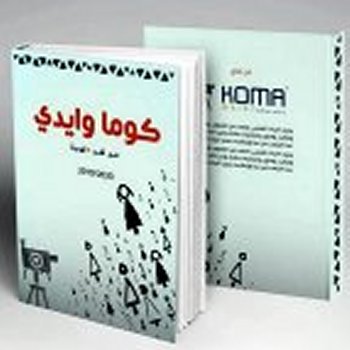
Hafsa Ambrek and a group of young volunteers created a dictionary of 230 rare Nubian words, translated into English and Spanish, after they researched the Nubian villages of Southern Egypt and interviewed aged people who had still learnt the language in Old Nubia, before it was drowned by Lake Nasser. This remarkable initiative contributing to salvage the Nubian language will hopefully inspire more similar initiatives. You can contact the authors on their facebook page
ابتكرت حفصة أمبرك ومجموعة من المتطوعين الشباب قاموسًا يضم 230 كلمة نوبية نادرة - "كوما وايدي
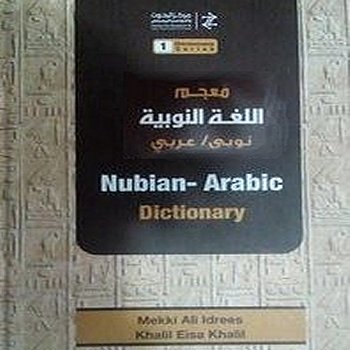
Prof. Mekki Ali Idris - Khalil Eissa Khalil - Nubian - Arabic Dictionary (Fadijja - Mahas) Based on the huge effort of Professor Mhammed Mutwelly Badr's manuscript of about 10'000 words, the Nubian - Arabic Dictionary is arranged according to the Nubian alphabet, contains about 18'000 words on 700 pages. Can be ordered with Poet Ezz Eldin Abuzeid, e-mail: ezzelddin96@gmail.com, tel. (+20) 01010129500
الأستاذ مكي علي إدريس - خليل عيسى خليل - قاموس نوبي - عربي (فاديجة - محاس) بناء على الجهد الهائل لمخطوطة الأستاذ محمد متولي بدر المكونة من حوالي 10 آلاف كلمة ، تم ترتيب القاموس النوبي العربي حسب الأبجدية النوبية ، يحتوي على حوالي 18000 كلمة في 700 صفحة. يمكن الطلب من الشاعر عز الدين أبوزيد ، البريد الإلكتروني: ezzelddin96@gmail.com، tel. (+20) 01010129500
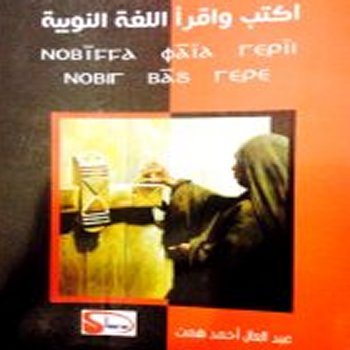
The Nubian Scholar Abdel Al Ahmed Himmet wrote the book "Write and Read in the Nubian Language", in which he describes the methods of writing in the Nubian language (Fadiga and Kenzi branches) and their grammatical rules, numbers, wisdom, proverbs and terminology, as well as maps and pictures of Nubia. You can reach him on his facebook page
الباحث النوبي عبد الأحمد حميت - "اكتب واقرا اللغة النوبية
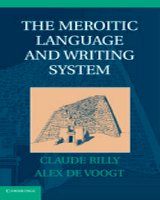
Authors: Claude Rilly, Centre National de la Recherche Scientifique (CNRS) - Paris, and Alex de Voogt, Museum of Natural History, New York. - Find PDF here
نظام اللغة والكتابة المرَّوية
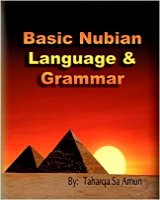
After graduating from Coppin State, the author Taharqa Sa Amun spent time researching Nubia's history and language and now a Nubianist.
اللغة النوبية الأساسية والقواعد
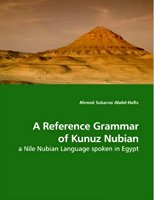
Ahmed Sokarno Abdel Hafiz wrote this igrammar of Kunuz Nubian, the first grammar ever written on this language. Find PDF here
كتب أحمد سوكارنو عبد الحفيظ هذا الإبهام لقواعد كنوز النوبية ، وهي أول قواعد لغة تتم كتابتها بهذه اللغة.
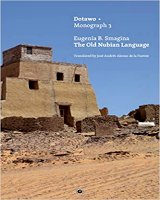
Eugenia Smagina first published her grammar of the Old Nubian language in 1986 in Russian. This translated The grammar is divided into sections on script, lexicon, morphology, and syntax
قواعد اللغة النوبية القديمة
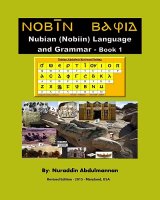
خليل قاسم كاتب "الشمندورة" المظلوم حيا وميتا.
By Nuraddin Abdulmannan - This is a simplified language and grammar book intended for English readers who are interested in learning Nobiin language

By Gerald M. Browne, Professor of the Classics and Linguistics at the University of Illinois. The direct ancestor of the Nubian still spoken in that area, it is the only indigenous African language whose development we can follow for over a millennium. Find PDF here
قواعد النوبة القديمة. السلف النوبي المباشر لا يزال يتحدث في هذا المجال ، وهي اللغة الأفريقية الأصلية الوحيدة التي يمكننا متابعة تطورها لأكثر من ألف عام.
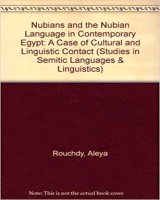
Rouchdy Aleya analyses the impact of the displacement of Nubians. After the resettlement of Nubians, the interactions between speakers of the two Nubian dialects and speakers of Arabic increased.
النوبيين واللغة النوبية في مصر المعاصرة: حالة من الاتصال الثقافي واللغوي
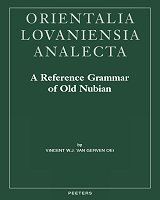
Dr. Vincent W.J. Van Gerven Oei, A Reference Grammar of Old Nubian; Old Nubian syntax, topic/focus constructions, subordination and coordination, verbal morphology including person, aspect, tense, pluractionality, affirmation, and negation, nominal morphology, derivation, and phonology.
دبليو جيه فان جيرفن أوي ، قواعد نحوية مرجعية للنوبيين القدامىت.
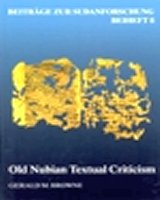
النصوص النوبية القديمة من قصر إبريم
By Gerald M. Browne - Old Nubian texts from Qasr Ibrim and others (order at michael.zach@univie.ac.at)

By Giovanni Ruffini, sixty-two Old Nubian documents from Qasr Ibrim, illustrating social and economic life of the Middle Nile Valley in the 12th–14th century.
وثائق نوبية قديمة من قصر إبريم

Gerald M. Browne - Old Nubian Texts with grammatical commentary and Old Nubian-English Glossary - order at michael.zach@univie.ac.at
نصوص أدبية بالنوبة القديمة

Studies of Old Nubian grammar, verbal system, plural, relative clauses - order at michael.zach@univie.ac.at
دراسات قواعد اللغة النوبية القديمة ، الجملة اللفظية ، الجمع ، الجمل النسبية
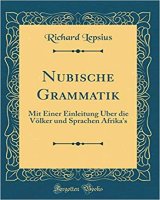
اقواعد اللغة النوبية (باللغة الألمانية)
By Richard Lepsius - Nubian Grammar (in German language) with an introduction about the peoples and languages of Africa. This book is a reproduction of an important historical work.

By M'Pienikoua Boni Marcus Teiga (in French), who tries to prove that all languages we speak today derive from an ancient first African language, the Nara, by comparing words with many World languages.
النوبة وأصول اللغة الأم العازبة

Gerald M. Browne - There are three indexes, the first giving the English correspondences with Old Nubian, as presented in the dictionary, the second and third indexes doing the same for Greek and Coptic, respectively. Find PDF here
القاموس النوبي القديم
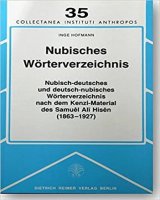
Inge Hoffmann wrote this German-Nubian (Kenzi) and Nubian-German dictionary, mainly based on information dating from the last centuries.
القاموس النوبي (كنزي) -الألماني

القاموس النوبي الدنقلاوي (انداندي) - انجليزي - نوبي
By Charles H. Armbruster, Dongolese Nubian - English - Nubian dictionary. This 1965 book is the result of years of close observation and analysis of the Dongolese conversations in which the author took part, or to which he attended; it is a monumental and authoritative work. Find PDF here

By Charles H. Armbruster, Dongolese Nubian - A grammar. Find PDF here
قواعد اللغة النوبية الدنجولاوية

By Gerald M. Browne, Introduction to Old Nubian - Meroitica, Schriften zur altsudanesischen Geschichte und Archäologie 11. Akademie Verlag, Berlin, 1989 Find PDF here
مقدمة في اللغة النوبية القديمة

Roland Werner - Grammatik des Nobiin, Verlag: Helmut Buske, Hamburg, 1987 - Grammar of Nobiin in German language and latin script. Find PDF here
قواعد النوبيين
